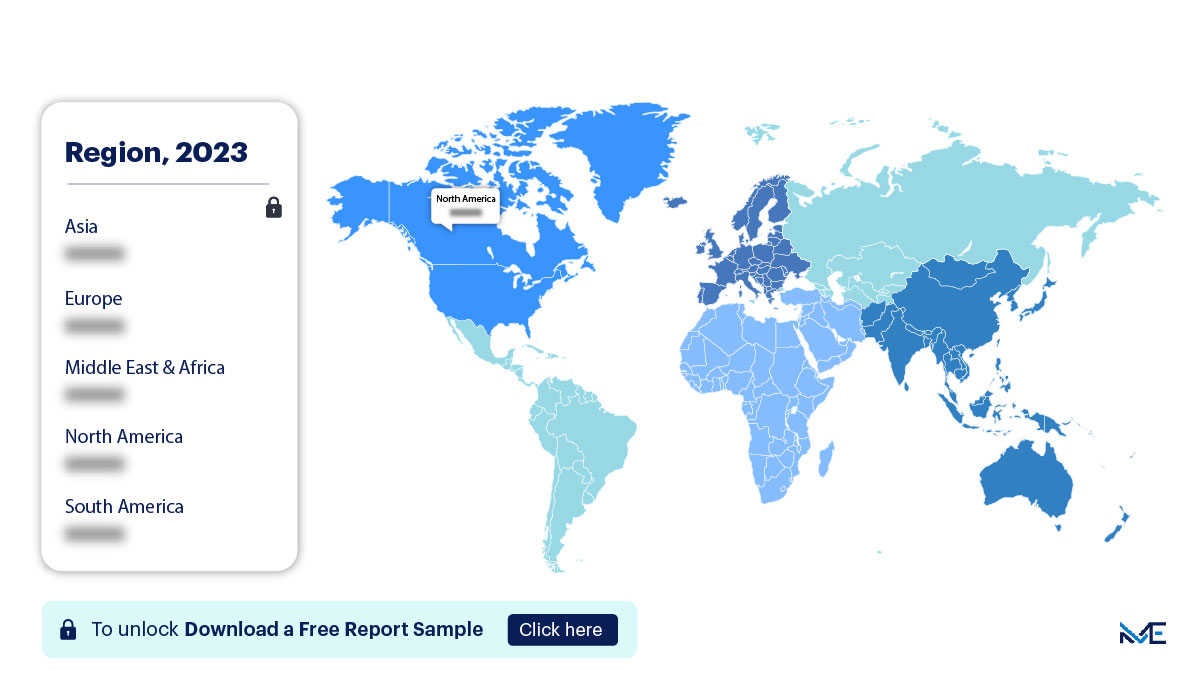Market Snapshot
| Study Period | 2019-2032 |
| Base Year | 2023 |
| Forcast Year | 2023-2032 |
| CAGR | 7.17 |


Gain accurate insights regarding the negative impacts of COVID-19 on all markets and industries
Download Sample PdfReport Overview
The Railway Telematics Market size is estimated to grow at a CAGR of 6.5% between 2022 and 2032. The market size is forecast to increase by USD 8,982.13 million. The growth of the market depends on several factors, including the need for real-time monitoring and diagnostics of railway systems, the demand for enhanced safety and security measures, and the increasing adoption of automation and IoT technologies in the railway sector. Railway telematics involves the use of technology to collect data from railway assets, such as locomotives, wagons, and tracks, and transmit it wirelessly for analysis and decision-making.
Railway Telematics Market Overview:
Drivers:
One of the key factors driving the Railway Telematics Market growth is the need for real-time monitoring and diagnostics of railway systems. Railway operators are increasingly deploying telematics solutions to monitor the health and performance of their rolling stock and infrastructure. Real-time data on parameters like speed, temperature, and track conditions allow operators to make informed decisions, reduce downtime, and improve operational efficiency.
Moreover, the demand for enhanced safety and security measures is boosting the adoption of railway telematics. Telematics systems can provide real-time alerts for issues such as track obstructions, unauthorized access, and equipment failures, helping prevent accidents and unauthorized activities on railway premises.
Trends:
A key trend shaping the Railway Telematics Market growth is the increasing adoption of automation and IoT technologies in the railway sector. Railway telematics systems are becoming integral to the implementation of smart railways. These technologies enable features like predictive maintenance, autonomous train operation, and real-time passenger information systems, enhancing the overall railway experience.
Additionally, there is a growing emphasis on data analytics and artificial intelligence (AI) in railway telematics. Analyzing telematics data with AI algorithms can provide valuable insights for optimizing routes, schedules, and maintenance plans. This data-driven approach is becoming a significant trend in modern rail operations.
Restraints:
One of the challenges hindering the Railway Telematics Market's growth is the high upfront cost of implementation. Installing telematics hardware and software across an entire railway network can be a substantial investment. Smaller railway operators or those with limited budgets may find it challenging to afford the initial setup costs.
Furthermore, interoperability issues can be a restraint. Railway telematics systems often need to work seamlessly with existing railway infrastructure and legacy systems. Ensuring compatibility and integration can be complex and time-consuming, potentially slowing down the adoption of telematics solutions.
Railway Telematics Market Segmentation By Application:
The locomotive monitoring segment is estimated to witness significant growth during the forecast period. Railway operators are increasingly using telematics systems to monitor locomotives in real-time. These systems provide data on engine performance, fuel consumption, maintenance needs, and more. Real-time monitoring enables operators to identify issues promptly, schedule maintenance proactively, and optimize locomotive performance for fuel efficiency and reduced emissions.
Railway Telematics Market Segmentation By Type:
The onboard telematics segment is expected to dominate the Railway Telematics Market. Onboard telematics systems are installed in railway vehicles, including passenger trains and freight wagons. These systems provide a range of functionalities, including passenger information, safety monitoring, and asset tracking. Passenger trains, in particular, are adopting onboard telematics for improving passenger experience and safety.
Regional Overview:

Download the report summary now!
Request pdf Sample
Europe is estimated to contribute significantly to the growth of the global Railway Telematics Market during the forecast period. The region has a well-established railway network and is at the forefront of adopting modern rail technologies. European railway operators are investing in telematics systems to enhance safety, efficiency, and passenger services. Initiatives like the European Rail Traffic Management System (ERTMS) are driving the adoption of telematics in rail transport.
Railway Telematics Market Customer Landscape:
The Railway Telematics Market industry report includes the adoption lifecycle of the market, covering from early adopters to mainstream adoption. It focuses on purchase criteria and drivers of price sensitivity to help railway operators and suppliers evaluate and develop their growth strategies in this evolving market.
Who are the Major Railway Telematics Market Companies?
Companies in the Railway Telematics Market are implementing various strategies to enhance their presence, including collaborations, product innovation, and expanding their service offerings.
-
Siemens Mobility: Siemens Mobility offers a comprehensive range of railway telematics solutions, including onboard systems, infrastructure monitoring, and passenger information systems.
-
Alstom: Alstom specializes in providing onboard telematics and train control systems for enhanced safety and operational efficiency.
-
Bombardier Transportation: Bombardier Transportation offers telematics solutions for rolling stock and infrastructure monitoring, contributing to improved rail network performance.
The research report also includes detailed analyses of the competitive landscape of the market and information about 20 market companies, including:
- General Electric Company
- Hitachi Ltd.
- Wabtec Corporation
- Trimble Inc.
- CalAmp Corporation
- TransCore LP
- Cisco Systems Inc.
- Cubic Transportation Systems
- Advantech Co. Ltd.
- Lilee Systems Ltd.
- Eurotech S.p.A.
- Stadler Rail AG
- Ansaldo STS S.p.A.
- Westermo Data Communications AB
- Sierra Wireless Inc.
- Clear Channel Outdoor Holdings Inc.
- Frequentis AG
- RADWIN Ltd.
- Quester Tangent Corporation
- Taoglas Group Holdings Ltd.
Qualitative and quantitative analysis of companies has been conducted to help clients understand the wider business environment as well as the strengths and weaknesses of key market players.
Segment Overview:
The Railway Telematics Market report forecasts market growth by revenue at global, regional & country levels and provides an analysis of the latest trends and growth opportunities from 2019 to 2032.
-
Application Outlook (USD Million, 2019 - 2032)
- Locomotive Monitoring
- Rolling Stock Management
- Railway Infrastructure Monitoring
- Passenger Information Systems
- Others
-
Type Outlook (USD Million, 2019 - 2032)
- Onboard Telematics
- Wayside Telematics
-
Geography Outlook (USD Million, 2019 - 2032)
- North America
- The United States
- Canada
- Europe
- The United Kingdom
- Germany
- France
- Rest of Europe
- Asia-Pacific
- China
- India
- South America
- Brazil
- Argentina
- Rest of South America
- Middle East & Africa
- Saudi Arabia
- South Africa
- Rest of the Middle East & Africa
- North America
RESEARCH METHODOLOGY
A research methodology is a systematic approach for assessing or conducting a market study. Researchers tend to draw on a variety of both qualitative and quantitative study methods, inclusive of investigations, survey, secondary data and market observation.
Such plans can focus on classifying the products offered by leading market players or simply use statistical models to interpret observations or test hypotheses. While some methods aim for a detailed description of the factors behind an observation, others present the context of the current market scenario.
Now let’s take a closer look at the research methods here.
Secondary Research Model
Extensive data is obtained and cumulated on a substantial basis during the inception phase of the research process. The data accumulated is consistently filtered through validation from the in-house database, paid sources as well reputable industry magazines. A robust research study requires an understanding of the overall value chain. Annual reports and financials of industry players are studied thoroughly to have a comprehensive idea of the market taxonomy.
Primary Insights
Post conglomeration of the data obtained through secondary research; a validation process is initiated to verify the numbers or figures. This process is usually performed by having a detailed discussion with the industry experts.
However, we do not restrict our primary interviews only to the industry leaders. Our team covers the entire value chain while verifying the data. A significant number of raw material suppliers, local manufacturers, distributors, and stakeholders are interviewed to make our findings authentic. The current trends which include the drivers, restraints, and opportunities are also derived through the primary research process.
Market Estimation
The market estimation is conducted by analyzing the data collected through both secondary and primary research. This process involves market breakdown, bottom-up and top- down approach.
Moreover, while forecasting the market a comprehensive statistical time series model is designed for each market. Macroeconomic indicators are considered to understand the current trends of the market. Each data point is verified by the process of data triangulation method to arrive at the final market estimates.
Final Presentation
The penultimate process results in a holistic research report. The study equips key industry players to undertake significant strategic decisions through the findings. The report encompasses detailed market information. Graphical representations of the current market trends are also made available in order to make the study highly comprehensible for the reader.
Personalized Business Report Tailored to Your Requirements
- Our expert analysts collaborate directly with you to comprehend your specific needs.
- Get data on regions, segments, competitors, and vendors of your choice.
- Information is presented in alignment with your exact preferences and formatting.
Free Sample Report
"Find new revenue generation opportunities"

